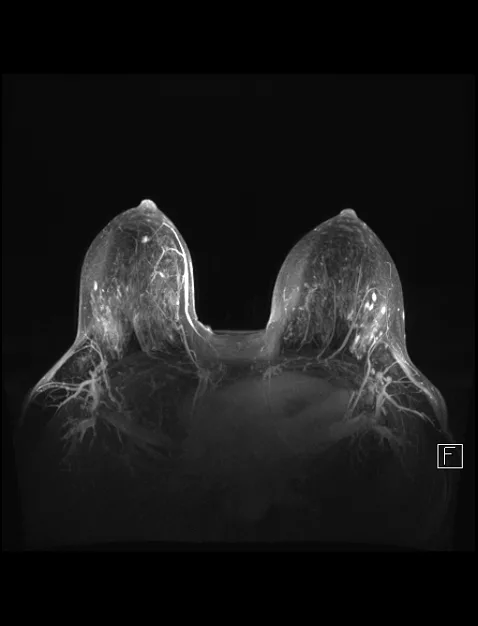How to Interpret Breast MRIs: 3 Essential Techniques
Understanding breast MRIs is crucial for diagnosing and treating breast conditions effectively. This guide introduces you to the MRI's advantages over mammograms and explains three key techniques for interpreting these detailed images.
Understanding Breast MRIs
A breast MRI provides a comprehensive view of the breast, offering detailed images of soft tissues, lesions, and blood vessels. This section outlines what breast MRIs are and their advantages for diagnosing various conditions.

What Do Breast MRIs Show?
- Soft Tissue Detail: Superior imaging of breast tissues, identifying lesions and abnormalities.
- Blood Vessel Visualization: Clear visualization of blood supply, useful in assessing tumors.
- Lesion Characterization: Differentiates between benign and malignant lesions.
- Disease Detection: More effective in identifying breast cancer and other abnormalities.
When Will You Get One?
- High-Risk Screening: For individuals with a high risk of breast cancer.
- Diagnosis Confirmation: To confirm the extent of breast cancer.
- Pre-surgical Planning: Provides detailed anatomy for surgical planning.
- Monitoring Treatment Response: Ideal for assessing changes during treatment.
Techniques to Interpret Breast MRIs
Interpreting breast MRIs involves a deeper understanding of advanced imaging techniques. Here are three techniques for professionals at different levels of expertise.
1. Utilizing X-ray Interpreter
X-ray Interpreter now extends its AI-driven analysis to MRI images. The process ensures precision:
- Registration: Register on X-ray Interpreter to access AI analysis for MRIs.
- Uploading MRIs: Upload your breast MRI images.
- Reviewing Interpretation: Receive the AI-generated interpretation and download your report.
- Professional Consultation: Always advisable to consult with medical professionals for comprehensive understanding.
Please check out our get started guide.
2. Using ChatGPT Plus
ChatGPT Plus now supports MRI image analysis with its latest GPT-4V model, offering detailed and interactive insights:
- Subscription: Subscribe to ChatGPT Plus for advanced image analysis features.
- Uploading MRIs: Interface with GPT-4V on OpenAI to upload your MRI images.
- Requesting Analysis: Engage with the model for a thorough analysis.
- Review and Confirmation: Assess and refine the analysis as needed.
- Professional Validation: Validation by medical experts is recommended.
Read more on our post about using ChatGPT Plus for MRI interpretation.
Alternatively, as several other AI models with vision capabilities emerge, you can also try other models, such as Grok by xAI, Claude by Anthropic, Gemini by Google Deepmind.
3. Mastering MRI Interpretation Yourself
For healthcare professionals aiming to enhance their MRI reading skills, self-learning is invaluable:
- Education: Pursue advanced training in MRI interpretation.
- Practice: Regular practice under expert guidance.
- Resources: Utilize advanced imaging books and online courses.
- Feedback: Seek feedback to refine skills.
- Continuous Learning: Engage in ongoing education to stay current with imaging techniques.
Recommended Resources for Self-Learning:
-
MRI Sequences and How to Read a Breast MRI and BI-RADS - UCLA Health: This resource provides detailed insights into MRI sequences and the BI-RADS lexicon for breast MRI interpretation, offering step-by-step guidance on how to read and report breast MRI findings effectively.
-
How to Read Breast MRI - YouTube: A comprehensive video tutorial that visually guides you through the process of reading breast MRI images, highlighting key areas to focus on and common pitfalls to avoid.
-
Breast MRI - Radiopaedia: An extensive article covering the principles of breast MRI, indications, techniques, and interpretation of findings. It includes high-quality images and case studies to enhance learning and practical understanding.
Comparative Analysis
Choosing the right technique for interpreting breast MRIs is vital for accurate diagnosis. This section compares the three methods:
| Criteria | X-ray Interpreter | ChatGPT Plus | Self-Reading |
|---|---|---|---|
| Accuracy | High (AI-based)1 | High (AI-based)1 | Varies (Skill-dependent) |
| Ease of Use | Easy | Moderate | Challenging |
| Cost | Starting from $2.50 per image | $20 per month | Free (excluding educational costs) |
| Time Efficiency | Fast | Moderate to Fast | Slow to Moderate |
| Learning Curve | Low | Low to Moderate | High |
| Additional Resources | Provided | Partially Provided (through OpenAI) | Self-sourced |
Each method has its strengths and weaknesses, with AI options providing rapid and precise interpretations, while self-reading encourages in-depth learning for medical professionals.
Conclusion
Breast MRI interpretation is critical for diagnosing complex breast conditions. This guide presents three techniques suited to different professional needs and skill levels. AI methods offer quick, precise interpretations, while self-learning is geared towards those seeking in-depth knowledge.
When selecting a technique, consider your level of expertise, the need for timely interpretation, and the resources available. Ethical and legal standards must always be maintained to ensure patient safety and confidentiality.
Related Articles
Resources and Further Learning
For further exploration and understanding of breast MRI interpretation, consider the following resources:
-
Breast MRI Scans - American Cancer Society: This resource provides a comprehensive overview of breast MRI, including its uses, preparation tips, and how the results are reported. It's a valuable guide for patients and healthcare providers alike.
-
Breast MRI - Johns Hopkins Medicine: Offers detailed information about the procedure, including what to expect during a breast MRI, its benefits, and potential risks. This is particularly useful for those undergoing the procedure for the first time.
-
Breast MRI - Breastcancer.org: This article covers the indications, advantages, and limitations of breast MRI. It also provides insights into how the test is performed and interpreted, making it a crucial resource for both patients and practitioners.